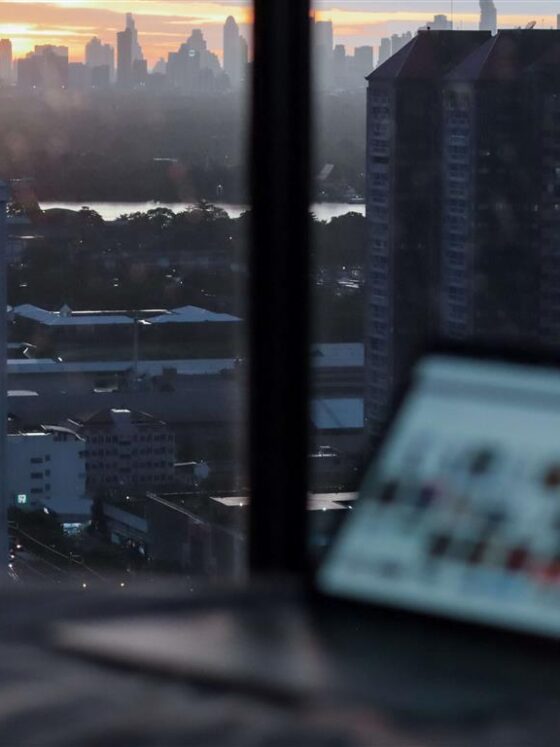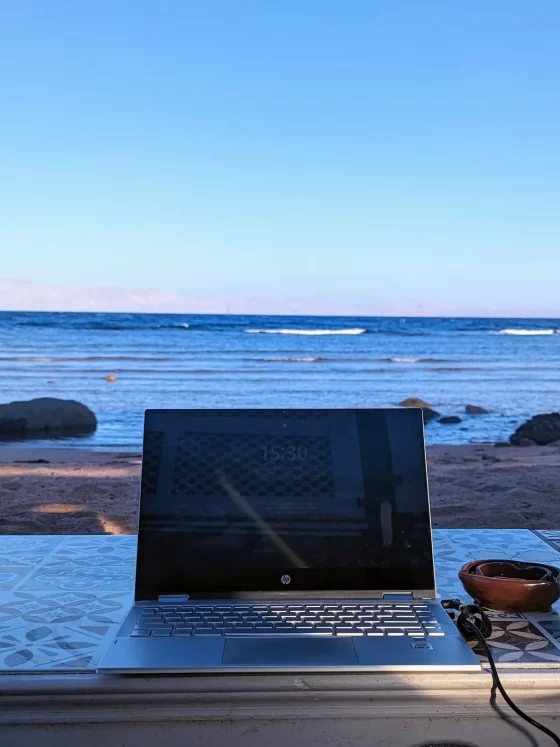When I became a digital nomad, I didn’t think too much about my remote work setup. I had my laptop, a charger, and one of those flimsy little European travel plugs, and I set out on my way.
At the time, I imagined working from beaches and cosy cafés. Fast-forward four years, and I now know the reality usually involves perching at a kitchen table. A decent remote work setup matters more than you’d think, even if you do join a coworking space (which I still recommend).
Through a bit of trial and error over the last four years of remote working, Aaron and I have figured out what actually makes a difference to our workday.
These are the digital nomad essentials I rely on daily, and I definitely wouldn’t be without them now. They’re the things I pack first and things I would absolutely replace if they broke or went missing.
Here are my remote working essentials that keep me comfortable, productive, and vaguely upright.

Extra screen
I genuinely do not understand how I coped without a second screen. If you regularly compare documents, drag information from one tab to another, or write while referencing anything at all, an extra screen will make your life so much easier.
For me, it’s a total non-negotiable now. I’ve got terrible eyesight and a deep-rooted fear of developing a hunchback. Without a second screen, I find myself hunched over my laptop trying to read three things at once on a screen that’s just too small.
I use a portable screen that plugs straight into my laptop via USB-C. It’s really slim and lightweight, which makes it easy to travel with, and it came with a sleeve that folds into a stand.
What I love:
- 15.6 inches with a full HD 1080p display – a.k.a. A beautifully clear screen
- Lightweight and flat, it slides easily into my backpack
- USB-C connection, so it’s plug-and-play
- Comes with a case that doubles as a stand
I use mine all the time when I’m working on the website, particularly when I’m writing content or looking for photos. I use it every day for work too as I spend a lot of time working with documents so it saves my poor neck from bending down or hunching over constantly. I’ll have my notes or keyword plan open on one screen and my working document or email on the other.
It makes the whole thing feel less cramped and more organised, and I don’t have to constantly flit between tabs (of which there are many!).
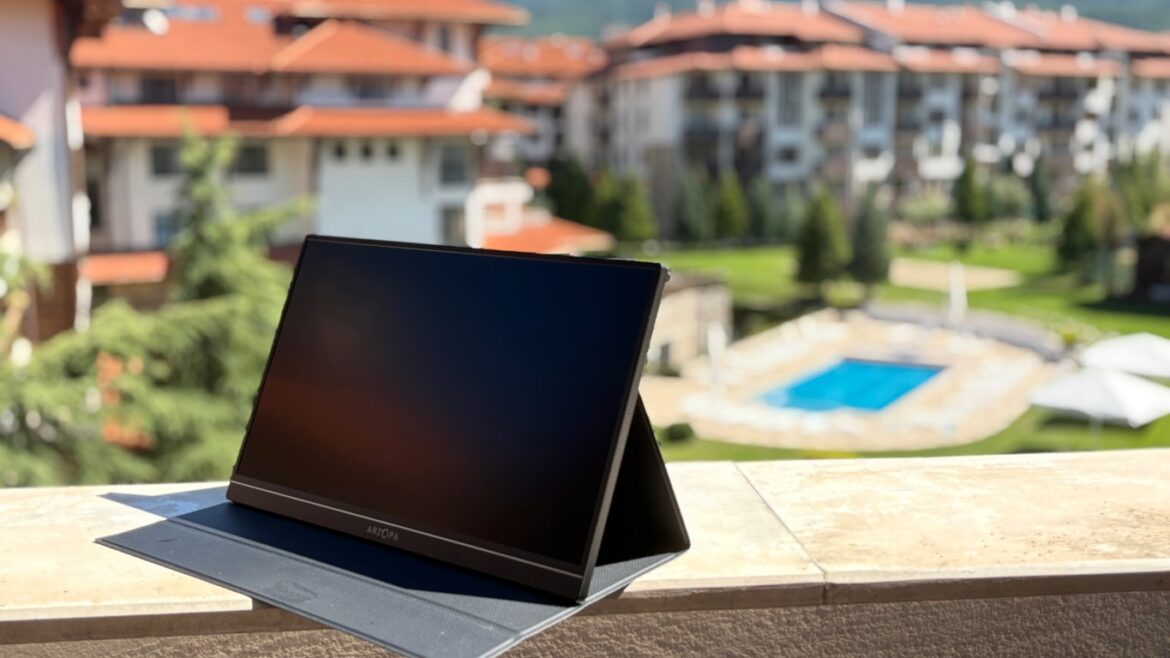
Laptop and screen stands
The extra screen leads me to this item! Your posture is one of the first things to suffer with a makeshift remote work setup. In a proper office, you might get a desk assessment or even an actual ergonomic chair.
As a digital nomad, you’ll find yourself perched at kitchen tables, or possibly even desks that are too low or too high. Then you’ll be slouching on sofas or working from bed when your back gives out from the poor desk setup.
Getting a proper laptop stand and an adjustable screen riser has made a big difference for me.
I remember from my office job that your screen should be at eye level, and your arms should be bent at about 90 degrees when you’re typing. If your neck is craned down all day, you’ll definitely feel it by dinner time.
I now use a proper laptop stand and a portable screen stand to bring this to eye level, just like back in the office. They’re not bulky, and they pack flat so I can bring them in my hand luggage.
Why I rate these:
- They’re adjustable in height
- They’re lightweight and foldable – they live in my hand luggage (backpack).
- Make a big difference to posture over time (I can feel a difference for sure!)
A good remote work setup isn’t about the fanciest gear, it’s about making your working hours as comfortable as possible while still being portable and these tick both boxes for me.
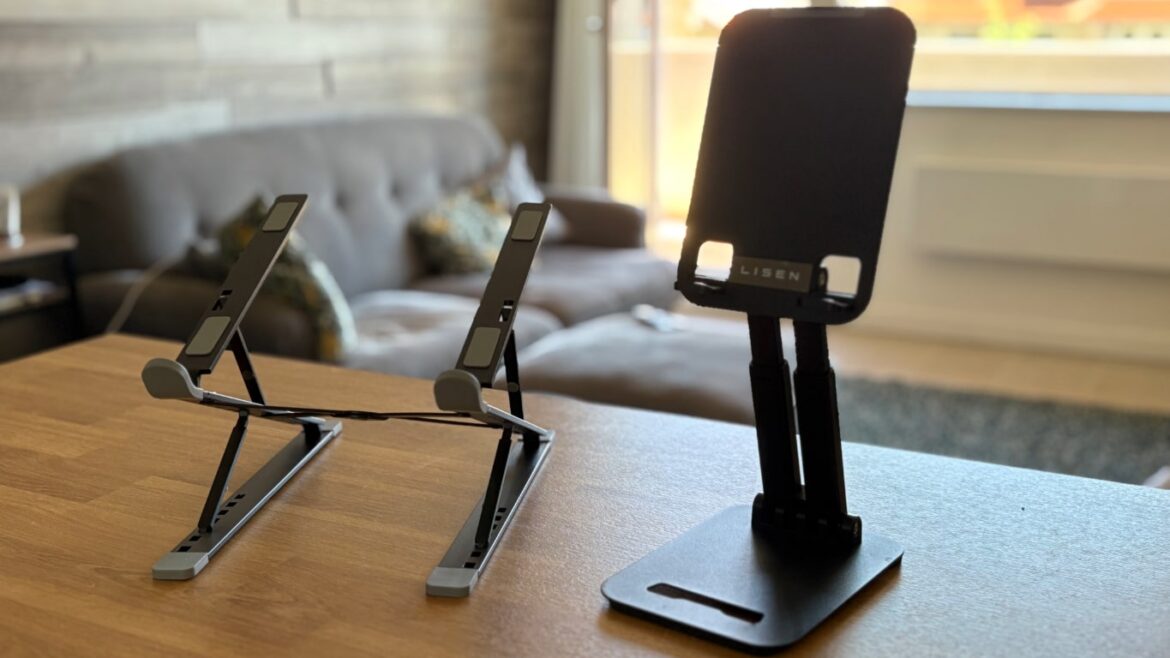
Wireless keyboard and mouse
When your laptop’s on a stand, you’ll need a Bluetooth keyboard and mouse to avoid hovering your arms/hands in midair.
I used to have a cheap keyboard that disconnected constantly. It drove me mad.
When it comes to your remote work setup, you only get what you pay for! We both have an ergonomic mouse (gotta protect those wrists!) and Aaron uses the MacBook Keyboard , which is great. Yes, it comes with a price tag to match, but the cheaper ones are hit and miss. I spent £30 on my previous one and it just didn’t work, I gave it away.
reMarkable
Before I got a reMarkable tablet, I used to travel with two or three notebooks. I had one for client notes, one for my blog, and one for general stuff and travel planning. It took up space, added weight, and made it harder to keep everything in one place.
Aaron bought me a reMarkable 2 for my birthday, and I’ve used it constantly ever since. It’s basically a digital notepad that feels like writing on paper. You can create different notebooks for each topic, and it’s super responsive.
Why I love it:
- Feels like writing on actual paper
- Lightweight and slim
- Organised into separate notebooks for different topics
- Easy to export as PDFs or send your notes via email
I use mine for planning content, sketching out travel itineraries, keeping track of invoices and payments, and even language learning. It keeps me organised without having to carry around loads of paper, and I don’t worry about losing important notes because everything is backed up.
There’s now a reMarkable Paper Pro with a colour display and backlight, but unless you’re using it as an e-reader too, I’d say it’s not essential (or worth the extra £200!).
Protective cases
When you’re moving around a lot, your stuff takes a hit. It’s easy to forget how fragile your equipment is until you unpack your bag and find something’s been crushed.
Most people have a laptop sleeve, but don’t forget about the smaller things too. Aaron’s mouse was completely obliterated during one of our recent travel days back to the UK. Since then, we’ve made a point of packing our gear properly.
I use a padded sleeve for my laptop and my extra screen. Aaron has a small case for his mouse and keeps the keyboard in the original box to protect it. We also have an “electronics bag” for all our cables and chargers. It sounds like a lot, but it actually keeps everything more organised and protected.
I use this one for my portable screen, and I pop my remarkable in the front pocket too. It’s nothing fancy, but it does the job!
These things get expensive to replace, especially when you’re in a place with limited tech shops or weird plugs. Protect them now, and they’ll last a lot longer.
Travel adapter with USB-C
I’ve had a few bad travel adapters over the years, ones that spark when you plug them in, or fall out of the wall completely.
This one I absolutely love. It’s compact, fits most countries, and has a USB-C and four USB-A ports, which is very handy now that everything charges through them. Mine has been going on for three years now.
I keep mine in my backpack so I can grab it easily in airports or when we arrive somewhere new. It charges my laptop, phone and headphones at the same time, and it hasn’t let me down yet.
USB-C Hub / Adapter
A lot of coworking spaces have extra screens, which is great. But almost all of them are HDMI, and if you’ve got a MacBook or a newer laptop, you’ll need a hub.
This little adapter is one of the most useful bits of my digital nomad setup. I also use it to plug in headphones, charge my phone from my laptop, or upload photos from an SD card.
Why I love it:
- Converts USB-C to HDMI, USB-A, SD and more
- Saves space by combining ports into one device
I might not use it all the time, but I always keep mine in my bag just in case I need it. It’s easy to forget how few ports modern laptops actually have until you need one. This covers all the bases.
Noise-cancelling headphones
Remote working can be brilliant, but it’s not always quiet. Depending on where you are, you might be sharing space with people on video calls, someone having a loud conversation on speakerphone, or a child wailing in the street outside (as I’m currently experiencing).
A good pair of noise-cancelling headphones makes all the difference. They help me concentrate, block out distractions, and make work calls clearer.
They’re especially useful on flights and buses, blocking out background noise so I can either focus or get some rest.
Here are a few options depending on your device, budget, and preferences.
Pixel Buds
I originally got my Pixel Buds because I had a Pixel phone. I wasn’t a fan of the phone (it didn’t last long), but I absolutely love the Pixel Buds. The noise cancelling is excellent, and the sound quality is great.
They’re especially good when paired with Android. That said, I still use them with my MacBook and they work just fine.
Apple Airpods
Aaron has these AirPods and loves them. If you’re in the Apple ecosystem, they just work. No fiddling with settings, and switching between devices is seamless.
We hate to admit it, but Apple products are just so good. These are a bit on the pricey side, but the quality, convenience and battery life make it worth the spend.
Sony over-ear headphones
If you prefer over-ear headphones, these Sony headphones are one of the best-rated pairs you can buy. They offer superb active noise cancellation and comfort for all-day use.
Earfun Air Pros
These Earfun options are a solid choice if you’re just starting out or don’t want to spend too much. Great for calls, focus, and reducing ambient noise when you’re out and about.
They offer hybrid active noise cancelling and decent sound quality at a much lower price than the premium brands. They’re also IPX5-rated, which means they can handle a bit of rain or sweat.
Reusable coffee cup
This isn’t tech, but it’s something I use nearly every day, and you’ll find it at my remote work setup!
One of my favourite things to do in a new place is find a good coffee spot on the way to the coworking space. I’ve got a reusable cup that Aaron bought me for my birthday, and I love it.
The one I have is the Chilly’s cup. I have it in pink and I love it, never leaks, it’s a nice size, keeps my coffee hot for AGES. You might find the spout a little bit annoying. I don’t mind it but Aaron doesn’t love that about it (it’s just a hole in the plastic top).
For an easier drinking spout, I love this Bottle Bottle one which does everything the Chilly’s one does, but is also half the price…
It’s a small thing, but it’s part of my routine now. Plus, it’s a good way to reduce waste when you’re getting coffee to go most days.
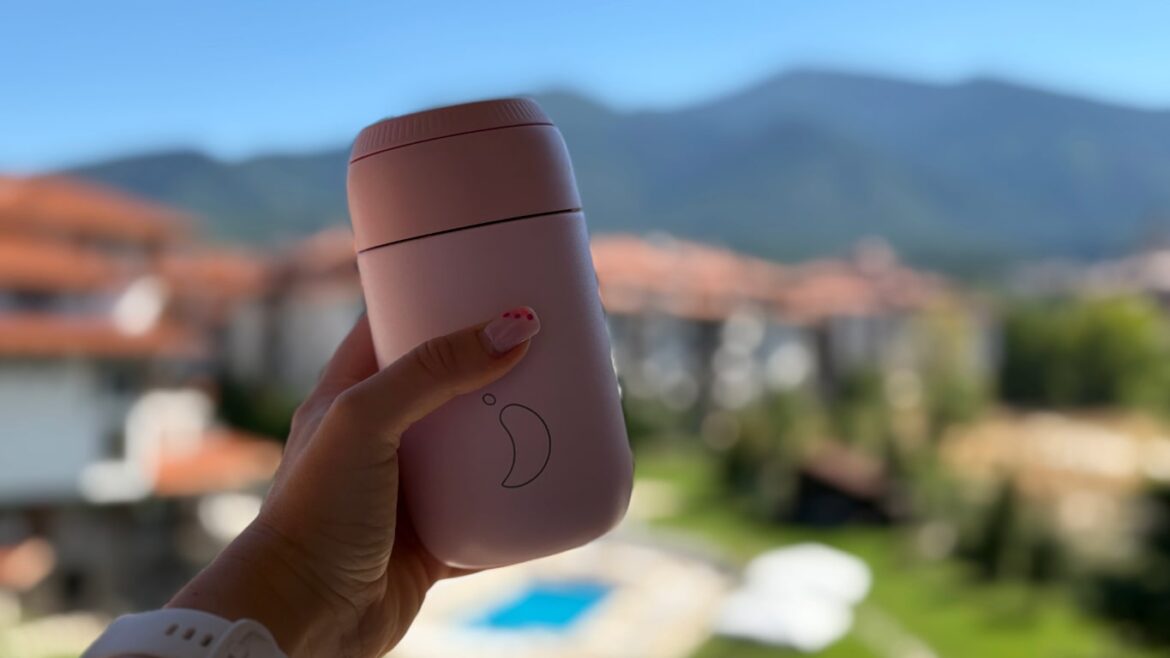
A water bottle that actually holds enough
If you’re travelling, a decent-sized water bottle is essential. I want one that holds more than a thimble while still fitting in your bag without being too clunky.
I finally got one that’s big enough to last me through a work session without constant refills, but still slim enough to fit in the bottle pocket of my backpack. I use it for work, but also the gym and travel days too.
This LARS bottle is a good choice. It holds up to 1.5L while staying slim and sleek. Alternatively, this Bottle Bottle one is 700ml but looks nice and also has a straw.
Conclusion
It’s taken four years to refine, but this is the gear I now rely on to keep my remote work setup comfortable, functional, and frustration-free. Whether you’re working from coworking spaces, apartments, or cafés, having the right tools makes all the difference.
Start with the items that’ll have the biggest impact on your day-to-day, and build from there. Your back, brain, and work will thank you for it!
Disclaimer: My blog contains affiliate links. If you buy something through these, I get a small commission at no additional cost to you. Thank you x

